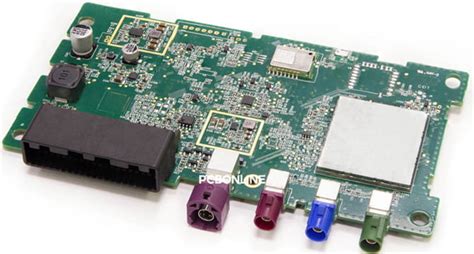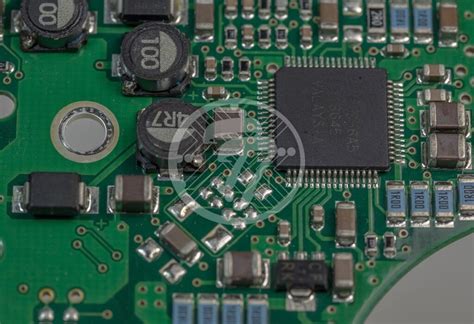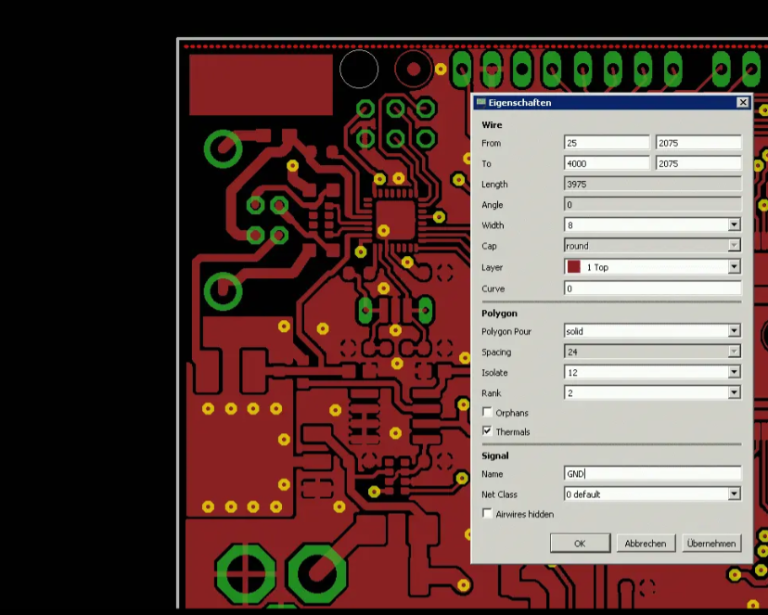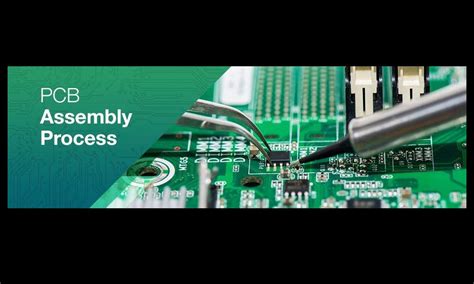RF PCB Design: Principles, Challenges, and Best Practices
Introduction
Radio Frequency (RF) Printed Circuit Board (PCB) design is a specialized area of electronics engineering that focuses on the development of circuit boards capable of operating at high frequencies, typically ranging from a few megahertz (MHz) to several gigahertz (GHz). RF PCBs are critical components in a wide range of applications, including wireless communication systems, radar, satellite systems, and Internet of Things (IoT) devices. Designing an RF PCB requires a deep understanding of electromagnetic theory, signal integrity, and material science, as well as the ability to balance performance, cost, and manufacturability.
This article explores the fundamental principles of RF PCB design, the challenges associated with high-frequency circuits, and the best practices for achieving optimal performance. By the end of this discussion, readers will have a comprehensive understanding of the key considerations and techniques involved in RF PCB design.
1. Fundamental Principles of RF PCB Design
1.1 Impedance Matching
Impedance matching is one of the most critical aspects of RF PCB design. At high frequencies, even small mismatches between the source, transmission line, and load impedances can lead to significant signal reflections, resulting in power loss and signal degradation. The characteristic impedance of transmission lines (typically 50 ohms in RF systems) must be carefully controlled to ensure efficient power transfer.
To achieve impedance matching, designers use techniques such as:
- Microstrip and Stripline Transmission Lines: These are commonly used to create controlled impedance traces on PCBs.
- Matching Networks: Components like inductors, capacitors, and resistors are used to match the impedance of different circuit sections.
1.2 Signal Integrity
Signal integrity is paramount in RF PCB design. High-frequency signals are susceptible to various forms of degradation, including attenuation, crosstalk, and electromagnetic interference (EMI). To maintain signal integrity, designers must:
- Minimize trace lengths to reduce signal loss.
- Use proper grounding techniques to avoid ground loops and noise.
- Implement shielding to protect sensitive RF components from external interference.
1.3 Material Selection
The choice of PCB material plays a significant role in RF performance. High-frequency signals are highly sensitive to the dielectric properties of the substrate material. Key considerations include:
- Dielectric Constant (Dk): A stable and low dielectric constant is preferred to minimize signal loss and phase distortion.
- Loss Tangent (Df): A low loss tangent is essential to reduce energy dissipation in the substrate.
- Thermal Stability: RF PCBs often operate in environments with varying temperatures, so the material must maintain consistent electrical properties under thermal stress.
Common materials used in RF PCB design include FR-4, Rogers, and Teflon-based substrates. While FR-4 is cost-effective and suitable for lower frequencies, Rogers materials are preferred for high-frequency applications due to their superior electrical properties.
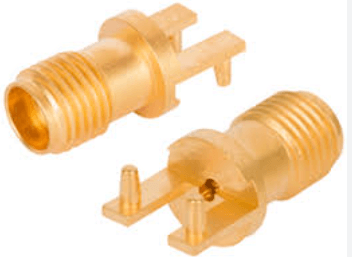
2. Challenges in RF PCB Design
2.1 Parasitic Effects
At high frequencies, parasitic effects such as capacitance, inductance, and resistance become significant. These effects can alter the behavior of components and traces, leading to unexpected performance issues. For example:
- Parasitic capacitance can cause signal delays and phase shifts.
- Parasitic inductance can lead to resonance and ringing in the circuit.
To mitigate parasitic effects, designers must:
- Use surface-mount components with minimal lead lengths.
- Optimize trace widths and spacing to reduce parasitic capacitance and inductance.
2.2 Electromagnetic Interference (EMI)
EMI is a major concern in RF PCB design, as high-frequency circuits can both generate and be affected by electromagnetic radiation. EMI can disrupt the operation of nearby circuits and lead to compliance issues with regulatory standards. Strategies to reduce EMI include:
- Proper grounding and shielding techniques.
- Careful placement of components to minimize coupling.
- Use of EMI filters and ferrite beads to suppress unwanted noise.
2.3 Thermal Management
RF circuits often generate significant heat due to the high power levels involved. Poor thermal management can lead to component failure and degraded performance. Designers must:
- Use thermal vias to dissipate heat from high-power components.
- Select materials with good thermal conductivity.
- Incorporate heat sinks and fans where necessary.
2.4 Manufacturing Tolerances
RF PCBs require precise manufacturing to achieve the desired performance. Variations in trace width, dielectric thickness, and material properties can significantly impact impedance and signal integrity. Close collaboration with PCB manufacturers is essential to ensure that design specifications are met.
3. Best Practices for RF PCB Design
3.1 Layer Stackup Design
A well-planned layer stackup is crucial for RF PCB performance. Key considerations include:
- Signal Layers: Place RF signal layers adjacent to ground planes to minimize interference and provide a controlled impedance environment.
- Ground Planes: Use continuous ground planes to reduce noise and provide a low-impedance return path for signals.
- Power Planes: Separate power planes from RF signal layers to avoid coupling and noise.
3.2 Component Placement
Proper component placement is essential to minimize signal loss and interference. Best practices include:
- Placing RF components as close as possible to each other to reduce trace lengths.
- Isolating sensitive RF components from noisy digital circuits.
- Orienting components to minimize crosstalk and coupling.
3.3 Trace Routing
Trace routing is a critical aspect of RF PCB design. To ensure optimal performance:
- Use curved or 45-degree bends instead of right-angle bends to reduce reflections.
- Avoid crossing traces on different layers to minimize crosstalk.
- Use differential pairs for high-speed signals to improve noise immunity.
3.4 Grounding Techniques
Effective grounding is essential for RF PCB performance. Recommended techniques include:
- Using a solid ground plane to provide a low-impedance return path.
- Implementing star grounding to avoid ground loops.
- Adding ground vias near RF components to reduce inductance.
3.5 Simulation and Testing
Simulation and testing are critical steps in RF PCB design. Advanced simulation tools can help designers analyze signal integrity, impedance matching, and EMI before prototyping. Key simulation techniques include:
- S-Parameter Analysis: To evaluate the frequency response of the circuit.
- Electromagnetic Field Simulation: To assess EMI and radiation patterns.
- Thermal Analysis: To identify potential hotspots and optimize thermal management.
After simulation, physical testing is necessary to validate the design. Common tests include:
- Network analyzer measurements to verify impedance matching.
- Spectrum analyzer measurements to assess signal quality and EMI.
- Thermal imaging to evaluate heat dissipation.

4. Advanced Techniques in RF PCB Design
4.1 Embedded Passives
Embedded passives, such as resistors, capacitors, and inductors, are integrated directly into the PCB substrate. This technique reduces the size of the PCB and minimizes parasitic effects, making it ideal for high-frequency applications.
4.2 3D Packaging
3D packaging involves stacking multiple PCBs or components vertically to save space and improve performance. This technique is particularly useful in compact RF systems, such as smartphones and wearable devices.
4.3 Antenna Integration
Integrating antennas directly into the PCB is a growing trend in RF design. This approach reduces the need for external antennas and improves overall system performance. Techniques for antenna integration include:
- Printed antennas, such as patch antennas and monopoles.
- Flexible PCBs for conformal antennas.
5. Conclusion
RF PCB design is a complex and multidisciplinary field that requires a deep understanding of high-frequency electronics, electromagnetic theory, and material science. By adhering to fundamental principles, addressing key challenges, and implementing best practices, designers can create RF PCBs that deliver optimal performance in a wide range of applications.
As technology continues to advance, the demand for high-performance RF PCBs will only grow. Innovations in materials, manufacturing techniques, and design tools will enable engineers to push the boundaries of what is possible, paving the way for next-generation wireless communication systems, IoT devices, and beyond. Whether you are a seasoned RF engineer or a newcomer to the field, mastering the art of RF PCB design is essential for staying at the forefront of modern electronics.


